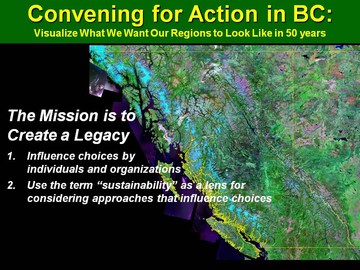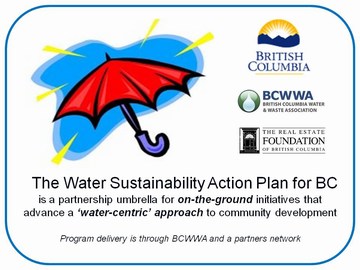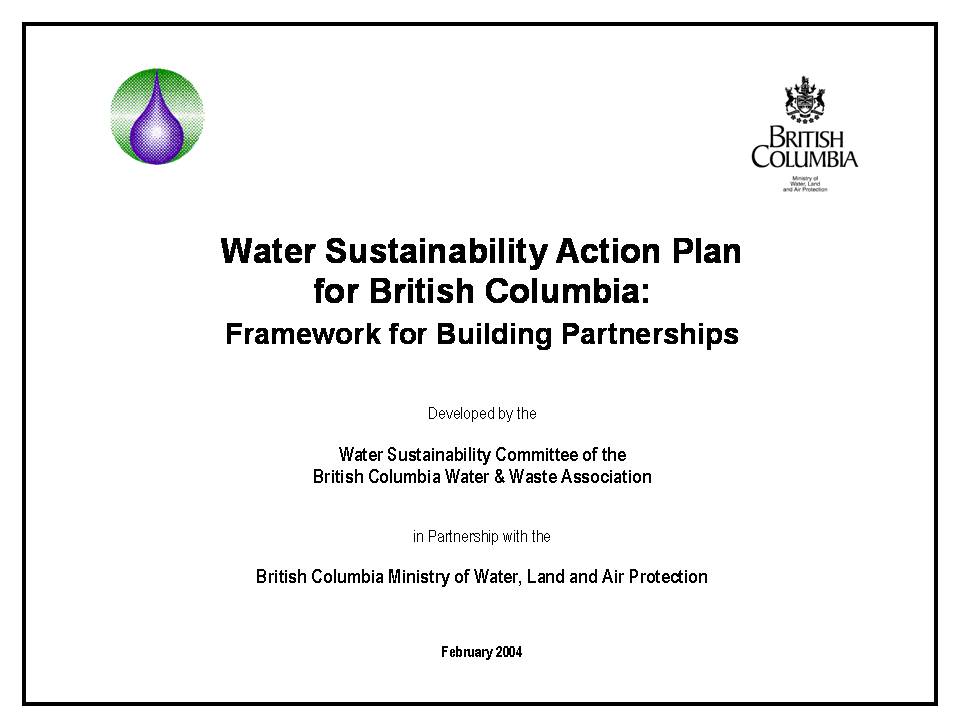Water Sustainability Action Plan adds depth to Living Water Smart
Leveraging Partnerships
“The Water Sustainability Action Plan for British Columbia has allowed the Province to leverage partnerships to greatly enhance the profile and resulting impact of  Living Water Smart,” states Kim Stephens, an engineer-planner who is the Action Plan Program Coordinator. His 35 years of experience cover the spectrum of water resource and infrastructure engineering.
Living Water Smart,” states Kim Stephens, an engineer-planner who is the Action Plan Program Coordinator. His 35 years of experience cover the spectrum of water resource and infrastructure engineering.
Kim Stephens has had a leadership role in a series of Provincial initiatives in British Columbia related to water sustainability, rainwater management and green infrastructure. Also, he has been invited to speak on ‘the British Columbia experience’ and make keynote presentations at forums in Australia and throughout North America.
Action Plan Delivery
“Released in 2004, the Water Sustainability Action Plan for British Columbia is a partnership umbrella for an array of on-the-ground initiatives that promote a ‘water-centric’ approach to community planning and development,” explains Kim Stephens. “The Action Plan comprises program elements that give local governments and practitioners the tools and experience to better manage land and water resources.”
The Water Sustainability Committee of the BC Water & Waste Association is the managing partner and is responsible for providing leadership, facilitation and organizational services for Action Plan program delivery. The Water Sustainability Committee is a roundtable of organizations that have a specific interest or mission in implementing the Action Plan.

Living Water Smart Implementation
“Living Water Smart provides British Columbians with a vision of what the regions of our province can look like if local governments prepare communities for climate change, choose to be water smart, and strive to achieve settlement change in balance with ecology. If we can get the water part right, then other parts are more likely to follow,” continues Kim Stephens.
“The Action Plan partners are playing a key delivery role in two of the five Living Water Smart theme areas, namely: community planning and development; and efficiency, outreach, public awareness. In effect, the Action Plan partners are functioning as the on-the-ground Living Water Smart implementation arm with local government. The in-kind support from local governments is substantial and growing, and means that the Living Water Smart team can focus their work effort on legislative reform.”
Align Local Actions with Provincial Goals
“Through regional initiatives such as CAVI…which is the acronym for Convening for Action on Vancouver Island…the Water Sustainability Action Plan is adding considerable depth to Living Water Smart. We have been collaborating with local governments to align local actions with provincial goals expressed in Living Water Smart. We have been doing this through program elements such as the Learning Lunch Seminar Series and Water Balance Model Forums.”
Commitments Frame Outcomes
Living Water Smart comprises 45 commitments. Two of these commitments have framed the learning outcomes for the Learning Lunch Seminar Series:
- 2008 Series: By 2012, all land and water managers will know what makes a stream healthy, and therefore be able to help land and water users factor in new approaches to securing stream health and the full range of stream benefits. (p 43 Living Water Smart)
- 2009 Series: Fifty percent of new municipal water needs will be acquired through conservation by 2020. (p 75 Living Water Smart)
“These are complementary outcomes. The link is water-centric land development standards. By implementing policies and practices that achieve the Living Water Smart vision, water sustainability outcomes are reduced rainwater runoff and less irrigation water use,” concludes Kim Stephens.




